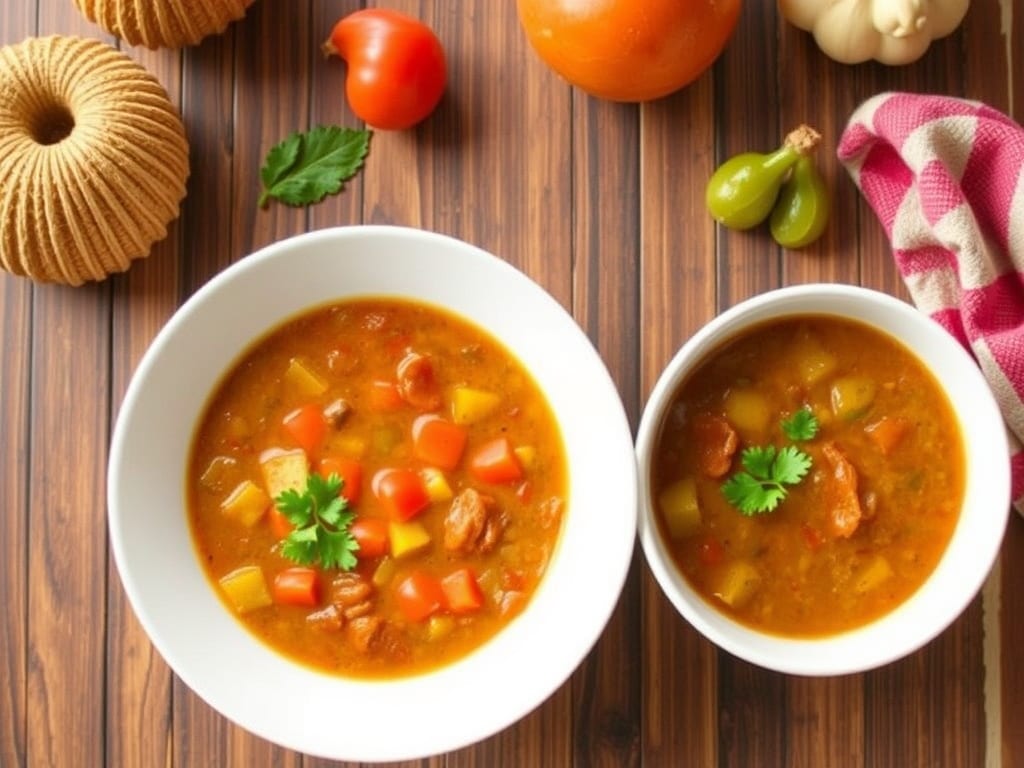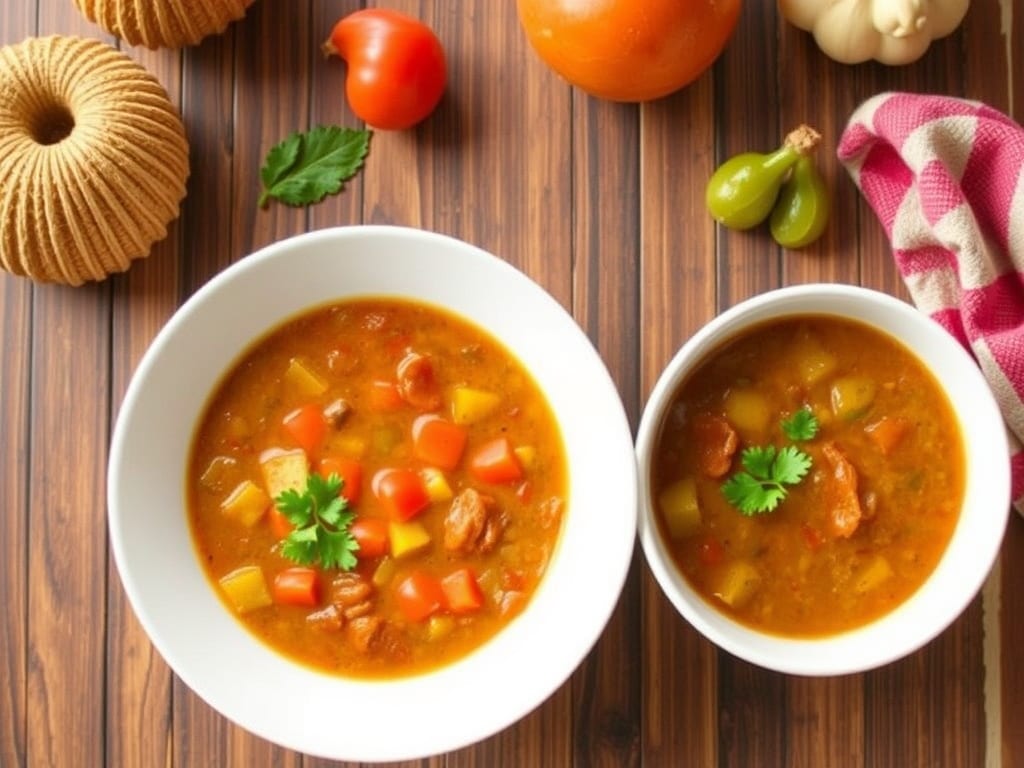Age Well, Eat Well: Easy & Healthy Recipes for Seniors
As we gracefully journey through life, our bodies evolve, and so do our nutritional needs. The golden years deserve to be vibrant, healthy, and full of vitality. And good nutrition isn't just about sustenance; it's about fueling the adventures that await. This guide presents a curated collection of easy and delicious healthy recipes for seniors, designed to meet evolving dietary needs and tantalize taste buds. Welcome to a world where aging well starts with eating well!
Understanding the Nutritional Needs of Seniors
Our nutritional needs change as we age. Here’s a breakdown of what's particularly important for seniors:
- Protein: Vital for muscle maintenance and repair.
- Calcium & Vitamin D: Essential for bone health and preventing osteoporosis.
- Vitamin B12: Helps maintain nerve function and red blood cell production.
- Fiber: Promotes digestive health and helps regulate blood sugar.
- Potassium: Important for maintaining healthy blood pressure.
- Hydration: Seniors are prone to dehydration, so staying hydrated is key.
Dietary Changes with Age: What to Consider
Several factors influence dietary requirements as we get older:
- Slower Metabolism: The body requires fewer calories.
- Decreased Appetite: Changes in taste and smell, medications, and other factors can reduce appetite.
- Dental Issues: Chewing difficulties may require softer foods.
- Changes in Digestion: Reduced stomach acid can affect nutrient absorption.
- Underlying Health Conditions: Conditions such as diabetes, heart disease, and kidney disease can impact dietary needs.
The Benefits of Eating Well for Older Adults
Embracing a healthy diet offers a wealth of benefits:
- Increased Energy Levels: Nourishing foods provide sustained energy throughout the day.
- Improved Immune Function: Adequate nutrient intake strengthens the immune system.
- Reduced Risk of Chronic Diseases: A healthy diet can help prevent or manage conditions like heart disease, diabetes, and certain cancers.
- Enhanced Cognitive Function: Nutrients like omega-3 fatty acids and antioxidants support brain health.
- Better Mood & Overall Well-being: A balanced diet contributes to emotional and mental well-being.
Common Dietary Challenges Faced by Seniors
Navigating dietary changes can come with unique hurdles:
- Chewing Difficulties: Soft foods or pureed options may be necessary.
- Appetite Loss: Encourage small, frequent meals and flavorful dishes.
- Limited Mobility: Meal delivery services or assistance with grocery shopping can be beneficial.
- Budget Constraints: Planning meals around affordable ingredients and utilizing coupons can help.
- Loneliness: Encourage social interaction during meal times to enhance enjoyment and appetite.
Recipe Modifications for Easier Preparation and Consumption
Adapting recipes for senior-friendly cooking is simpler than you think:
- Cut Ingredients into Smaller Pieces: Makes them easier to chew and digest.
- Use Softer Cooking Methods: Steaming, poaching, or slow cooking can tenderize foods.
- Add Healthy Sauces and Gravies: Improves moisture and flavor.
- Incorporate Nutrient-Dense Purees: Add pureed vegetables to soups, sauces, or smoothies for an extra boost.
- Use Pre-Cut Vegetables and Fruits: Saves time and effort in the kitchen.
Recipe 1: Heart-Healthy Oatmeal with Berries and Nuts
A warm and comforting breakfast that’s packed with fiber, antioxidants, and healthy fats.
Ingredients:
- ½ cup rolled oats
- 1 cup water or milk (dairy or non-dairy)
- ½ cup mixed berries (fresh or frozen)
- ¼ cup chopped nuts (walnuts, almonds, or pecans)
- 1 teaspoon honey or maple syrup (optional)
- Pinch of cinnamon
Instructions:
- Combine oats and water/milk in a saucepan. Bring to a boil, then reduce heat and simmer for 5-7 minutes, or until oats are cooked.
- Stir in berries, nuts, honey/maple syrup (if using), and cinnamon.
- Serve warm.
Nutritional Information (approximate):
Calories: 250-300, Protein: 8-10g, Fiber: 6-8g
Variations:
- Add a tablespoon of chia seeds or flax seeds for extra fiber and omega-3s.
- Use different fruits like bananas, peaches, or apples.
- Stir in a scoop of protein powder for added protein.
- Top with a dollop of Greek yogurt for extra creaminess and protein.
Recipe 2: One-Pan Salmon with Roasted Vegetables
A simple and nutritious dinner that’s rich in omega-3 fatty acids, vitamins, and minerals.
Ingredients:
- 4 salmon fillets (4-6 oz each)
- 1 cup broccoli florets
- 1 cup sliced carrots
- 1 cup chopped bell peppers (any color)
- 2 tablespoons olive oil
- 1 teaspoon garlic powder
- Salt and pepper to taste
Instructions:
- Preheat oven to 400°F (200°C).
- In a large bowl, toss broccoli, carrots, and bell peppers with olive oil, garlic powder, salt, and pepper.
- Spread vegetables in a single layer on a baking sheet.
- Place salmon fillets on top of the vegetables.
- Bake for 12-15 minutes, or until salmon is cooked through and vegetables are tender.
Nutritional Information (approximate):
Calories: 350-400, Protein: 30-35g, Omega-3 Fatty Acids: High
Variations:
- Use different vegetables like zucchini, asparagus, or sweet potatoes.
- Add a squeeze of lemon juice to the salmon before baking.
- Season with herbs like dill, thyme, or rosemary.
- Substitute salmon with another fish like cod or trout.
Recipe 3: Hearty Lentil Soup
A filling and fiber-rich soup that's easy to prepare and perfect for a chilly evening.
Ingredients:
- 1 tablespoon olive oil
- 1 onion, chopped
- 2 carrots, chopped
- 2 celery stalks, chopped
- 4 cloves garlic, minced
- 1 cup brown or green lentils, rinsed
- 6 cups vegetable broth
- 1 teaspoon dried thyme
- 1 bay leaf
- Salt and pepper to taste
Instructions:

- Heat olive oil in a large pot over medium heat. Add onion, carrots, and celery and cook until softened, about 5 minutes.
- Add garlic and cook for 1 minute more.
- Stir in lentils, vegetable broth, thyme, and bay leaf. Bring to a boil, then reduce heat and simmer for 20-25 minutes, or until lentils are tender.
- Remove bay leaf and season with salt and pepper to taste.
- Serve with a side of whole-grain bread.
Nutritional Information (approximate):
Calories: 200-250, Protein: 15-18g, Fiber: 10-12g
Variations:
- Add diced tomatoes or spinach for extra nutrients.
- Use chicken broth instead of vegetable broth for a richer flavor.
- Stir in a tablespoon of tomato paste for a deeper flavor.
- Add a squeeze of lemon juice before serving for brightness.
Recipe 4: Chicken and Vegetable Stir-Fry
A quick and colorful meal that’s packed with protein and vitamins.
Ingredients:
- 1 tablespoon olive oil
- 1 pound boneless, skinless chicken breast, cut into bite-sized pieces
- 1 cup broccoli florets
- 1 cup sliced carrots
- 1 cup sliced bell peppers (any color)
- ½ cup sliced snow peas
- ¼ cup soy sauce (low sodium)
- 1 tablespoon honey
- 1 teaspoon ginger, minced
- 1 clove garlic, minced
Instructions:
- Heat olive oil in a large skillet or wok over medium-high heat.
- Add chicken and cook until browned and cooked through.
- Add broccoli, carrots, bell peppers, and snow peas and stir-fry for 5-7 minutes, or until vegetables are tender-crisp.
- In a small bowl, whisk together soy sauce, honey, ginger, and garlic.
- Pour sauce over chicken and vegetables and stir-fry for 1-2 minutes, or until sauce is thickened.
- Serve over brown rice or quinoa.
Nutritional Information (approximate):
Calories: 300-350, Protein: 30-35g, Vitamins: Varies depending on vegetables
Variations:
- Use different vegetables like mushrooms, zucchini, or bok choy.
- Add tofu instead of chicken for a vegetarian option.
- Use different sauces like teriyaki or hoisin.
- Add a pinch of red pepper flakes for a spicy kick.
Recipe 5: Smoothie with Spinach, Banana, and Protein Powder
A refreshing and nutrient-packed smoothie that's perfect for breakfast or a snack.
Ingredients:
- 1 cup spinach
- 1 banana, frozen
- 1 scoop protein powder (whey, soy, or plant-based)
- 1 cup milk (dairy or non-dairy)
- ½ cup water
- 1 tablespoon nut butter (almond, peanut, or cashew)
Instructions:
- Combine all ingredients in a blender.
- Blend until smooth and creamy.
- Add more water if needed to reach desired consistency.
- Serve immediately.
Nutritional Information (approximate):
Calories: 250-300, Protein: 25-30g, Fiber: 5-7g
Variations:
- Add berries like blueberries or strawberries for extra antioxidants.
- Use Greek yogurt instead of protein powder for added protein and creaminess.
- Add chia seeds or flax seeds for extra fiber and omega-3s.
- Use different fruits like mango or pineapple.
Grocery Shopping on a Budget
Healthy eating doesn't have to break the bank! Here are some tips:
- Plan Your Meals: Create a weekly meal plan and shop accordingly.
- Make a List: Stick to your list to avoid impulse purchases.
- Buy in Season: Seasonal produce is often cheaper and fresher.
- Utilize Coupons and Sales: Check for discounts and promotions.
- Buy in Bulk: Purchase non-perishable items like grains, beans, and nuts in bulk.
- Choose Frozen Fruits and Vegetables: They are often more affordable than fresh and last longer.
- Compare Unit Prices: Check the price per ounce or pound to find the best deals.
Weekly Meal Planning for Optimal Nutrition and Convenience
Take the stress out of mealtime by creating a weekly plan:
- Choose a Day to Plan: Set aside time each week to plan your meals.
- Consider Your Dietary Needs: Incorporate a variety of foods from all food groups.
- Check Your Pantry and Fridge: Use ingredients you already have on hand.
- Write Down Your Meal Ideas: Create a list of meals for each day of the week.
- Make a Grocery List: List all the ingredients you need to purchase.
- Prepare Ingredients in Advance: Chop vegetables or cook grains ahead of time to save time during the week.
Strategies for Increasing Appetite and Making Mealtimes Enjoyable
If appetite loss is a concern, try these strategies:
- Eat Small, Frequent Meals: Opt for several small meals or snacks throughout the day instead of three large meals.
- Make Meals Visually Appealing: Present food attractively to stimulate appetite.
- Add Flavor with Herbs and Spices: Use plenty of herbs and spices to enhance the taste of food.
- Eat with Others: Socializing during meal times can improve appetite and enjoyment.
- Choose Favorite Foods: Incorporate foods you enjoy into your diet.
- Avoid Drinking Liquids Before or During Meals: This can fill you up and reduce appetite.
- Exercise Regularly: Physical activity can stimulate appetite.
The Importance of Hydration for Seniors
Staying hydrated is crucial for overall health:
- Drink Water Throughout the Day: Aim for at least 8 glasses of water daily.
- Choose Healthy Beverages: Opt for water, herbal teas, or unsweetened juices.
- Eat Water-Rich Foods: Include fruits and vegetables like watermelon, cucumbers, and celery in your diet.
- Avoid Sugary Drinks: Limit intake of soda, sweetened juices, and sports drinks.
- Carry a Water Bottle: Keep water readily available to sip on throughout the day.
- Drink Before, During, and After Exercise: Replenish fluids lost during physical activity.
- Be Mindful of Medications: Some medications can increase dehydration risk, so drink extra fluids.
When to Consult a Doctor or Registered Dietitian
For personalized dietary advice, consult a healthcare professional:
- If you have underlying health conditions: A doctor or dietitian can tailor a diet to your specific needs.
- If you experience significant weight loss or gain: This could indicate an underlying issue that needs to be addressed.
- If you have difficulty chewing or swallowing: A professional can help modify your diet for easier consumption.
- If you have questions about your dietary needs: A registered dietitian can provide guidance and support.
Eating well is a cornerstone of healthy aging. By adapting recipes, understanding nutritional needs, and addressing potential challenges, seniors can enjoy a vibrant and fulfilling life, one delicious, nutritious meal at a time. Cheers to your health!

